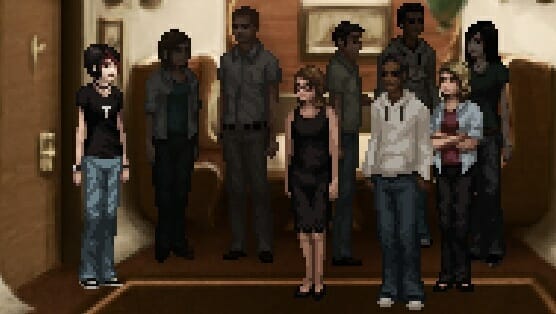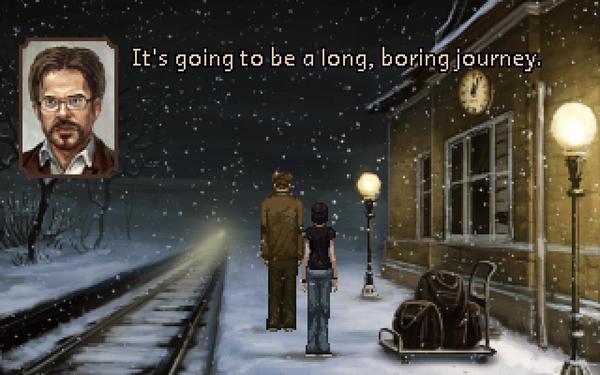The Charnel House Trilogy: Dangers on a Train

The Charnel House Trilogy is a collection of three shortish point-and-click adventure games by Owl Cave. Sepulchre (which was released last year as a free download is bookended by Inhale and Exhale. The former introduces us to a main character, Alex, a young woman fresh off of a breakup and full of observations about how people react to game reviews (a little inside-jokey, maybe, but it’s probably fair to assume that the audience for independent point-and-click horror has some familiarity with games as they are “discussed” online). Sepulchre switches up the player character and moves the action to a train, which Alex explores in the third.
Different takes on the Horrific are splattered throughout the game. The borders between memory and the supernatural and the Uncanny and the Weird and dreams are porous, and for most of the three episodes it’s difficult to tell which of those categories any given event falls into. And even as you do find out what is going on, ambiguity remains.
Motifs run throughout the episodes, sometimes verbal and sometimes visual and sometimes spatial. There aren’t a lot of physical spaces in Charnel, and so the game can play on your familiarity with them. Connections are drawn between objects because they’re in the same spot on the screen in the same location at different times.
The pixel art puts a lot of the detail work on the audio (dialogue is fully voice-acted and, except for Paste contributor Cara Ellison’s lonely radio DJ, completely subtitled). These aesthetic decisions mean that some of the game’s Horrifics are more effective than others. It’s hard to reconcile a character’s disgust at something with the stylized low-resolution image on screen. The kind of unexpected apparitions that, for example, in a film would provide a jump scare via a controlled and tightly-focused image here instead add to the overall atmosphere of creeping uncertainty.
It’s tempting when playing a game to assume that uncertainty is a mistake: not knowing what’s going on is the deadliest of the sins against the feedback loop. But that’s not the aim here: Charnel is narrating a story. A story where “Why isn’t this character freaking out?” is not an observation of poor writing.
And so its puzzles are fairly straight-forward. Its limited space makes it unlikely that you’ve overlooked some kind of interaction; the confusion is making sense of the events on screen, not on figuring out what two items to combine or where to go next.
In fact, the dialogue actively works against your not knowing what to click next. A solved puzzle or an event witnessed is usually followed by one of the characters (who you may or may not control) saying what the next point of interest ought to be.
It’s a solid choice. Minimizing the confusion in what to click and when to click it frees the mind up to ponder not the player as clicker but the characters, their actions and reactions.
